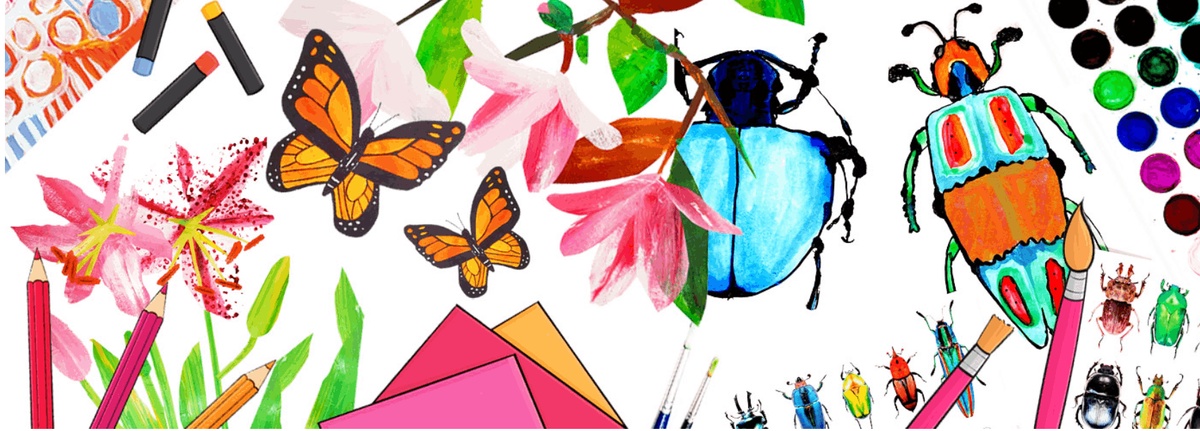Art is a powerful means of self-expression, and incorporating well-structured art lesson plans into educational curricula brings forth a plethora of benefits. Beyond the sheer joy of creating, art lesson plans offer students a platform to explore, imagine, and develop essential skills that extend far beyond the canvas. In this exploration, we'll delve into the various advantages that well-crafted art lesson plans bring to the table.
1. Fostering Creativity:
At the core of art lesson plans lies the nurturing of creativity. These plans provide students with the freedom to experiment with colors, shapes, and forms, encouraging them to think outside the box. As they engage in the creative process, students learn to express their unique perspectives, fostering a lifelong appreciation for creativity.
2. Enhancing Fine Motor Skills:
Art often involves intricate hand movements – whether it's holding a paintbrush, sculpting with clay, or cutting paper. Art lesson plans, designed with various hands-on activities, contribute significantly to the development of fine motor skills. These skills are crucial not only for artistic endeavors but also for day-to-day tasks like writing and tying shoelaces.
3. Cognitive Development:
Engaging in art stimulates cognitive development. Students must make decisions about the composition, colors, and techniques they use in their creations. This decision-making process enhances critical thinking, problem-solving skills, and the ability to analyze and interpret visual information – skills that are transferable to other academic subjects.
4. Cultural Awareness:
Through art, students can explore different cultures, historical periods, and artistic movements. Well-rounded art lesson plans introduce students to the rich tapestry of artistic traditions, fostering cultural awareness and an appreciation for diversity.
5. Building Confidence:
Art lesson plans offer a supportive environment for students to showcase their individual talents. When students see their creations taking shape, it boosts their self-esteem and confidence. This newfound confidence often extends beyond the art studio into other aspects of their academic and personal lives.
6. Stress Reduction:
Art has therapeutic qualities, and incorporating it into lesson plans provides students with a constructive outlet for stress. Engaging in creative activities allows students to relax, unwind, and channel their energy into the artistic process, promoting mental well-being.
7. Promoting Collaboration:
Many art projects are inherently collaborative. Students work together, share ideas, and contribute to a collective creation. Art lesson plans, designed with collaborative projects in mind, nurture teamwork and effective communication skills.
8. Real-World Application:
Art is not confined to the classroom; it permeates various aspects of our daily lives. Art lesson plans that incorporate real-world applications – such as graphic design, architecture, or industrial design – provide students with insights into potential career paths and practical applications of artistic skills.
9. Emotional Expression and Regulation:
Art provides a safe space for students to express their emotions freely. It serves as a non-verbal medium for communicating feelings, experiences, and perspectives. This emotional expression, coupled with guidance on interpreting art, contributes to emotional intelligence and regulation.
10. Life-Long Appreciation for Art:
Well-structured art lesson plans instill a life-long appreciation for art. Students exposed to diverse artistic styles, mediums, and techniques are more likely to become patrons of the arts, visit galleries, and continue creating art throughout their lives.
Crafting Effective Art Lesson Plans
To reap the full benefits of art lesson plans, educators must craft plans that are not only engaging but also aligned with educational goals. Consider incorporating a variety of art forms, exposing students to different techniques and styles. Tailor lesson plans to suit different learning styles, ensuring that every student has the opportunity to shine.
In conclusion, the benefits of art lesson plans extend far beyond the classroom walls. By fostering creativity, enhancing fine motor skills, and promoting cultural awareness, these plans play a pivotal role in shaping well-rounded individuals. As educators continue to recognize the profound impact of art on holistic development, the integration of thoughtfully designed art lesson plans becomes an invaluable asset in nurturing the next generation of creative thinkers and lifelong art enthusiasts.


No comments yet